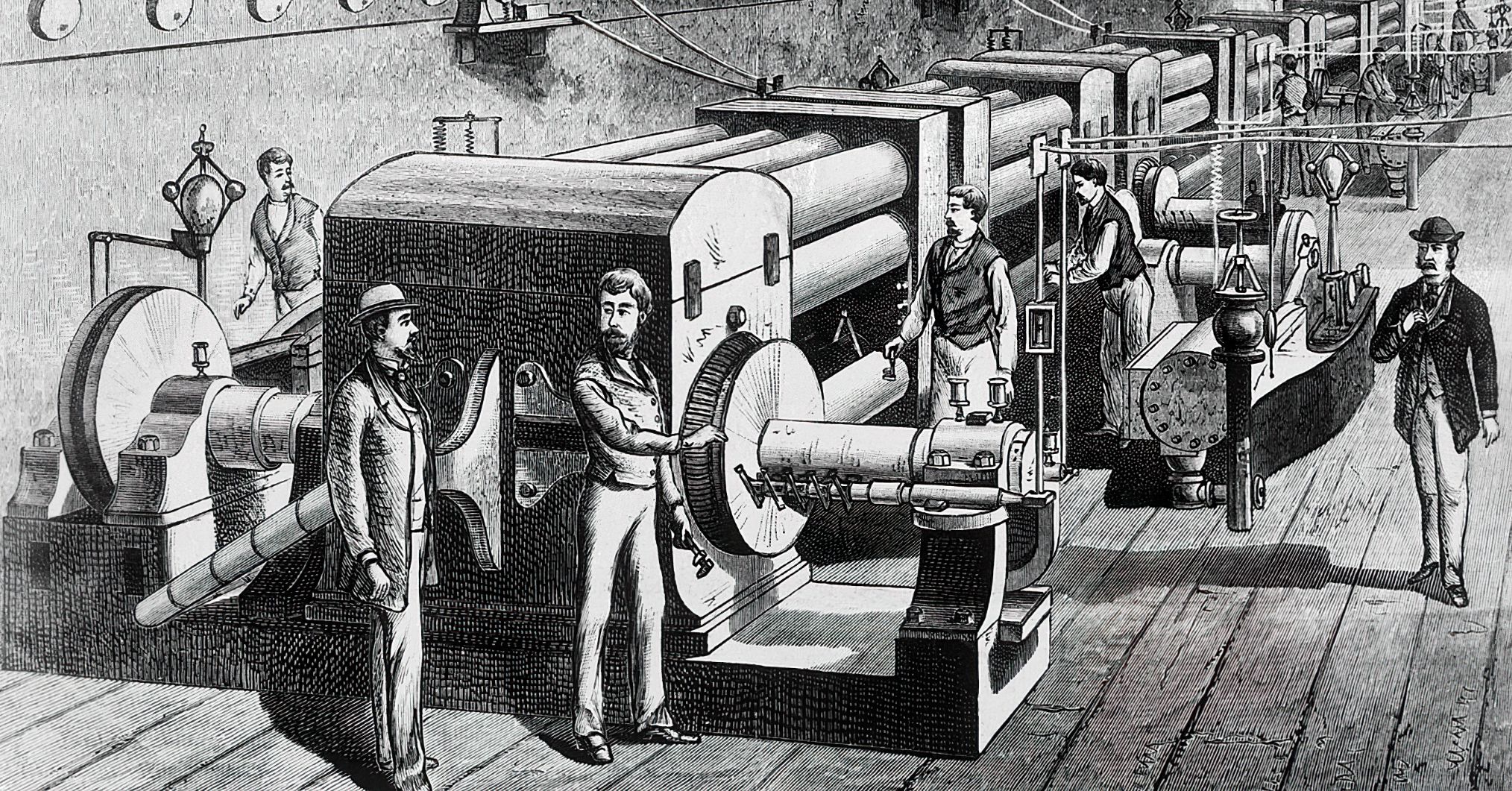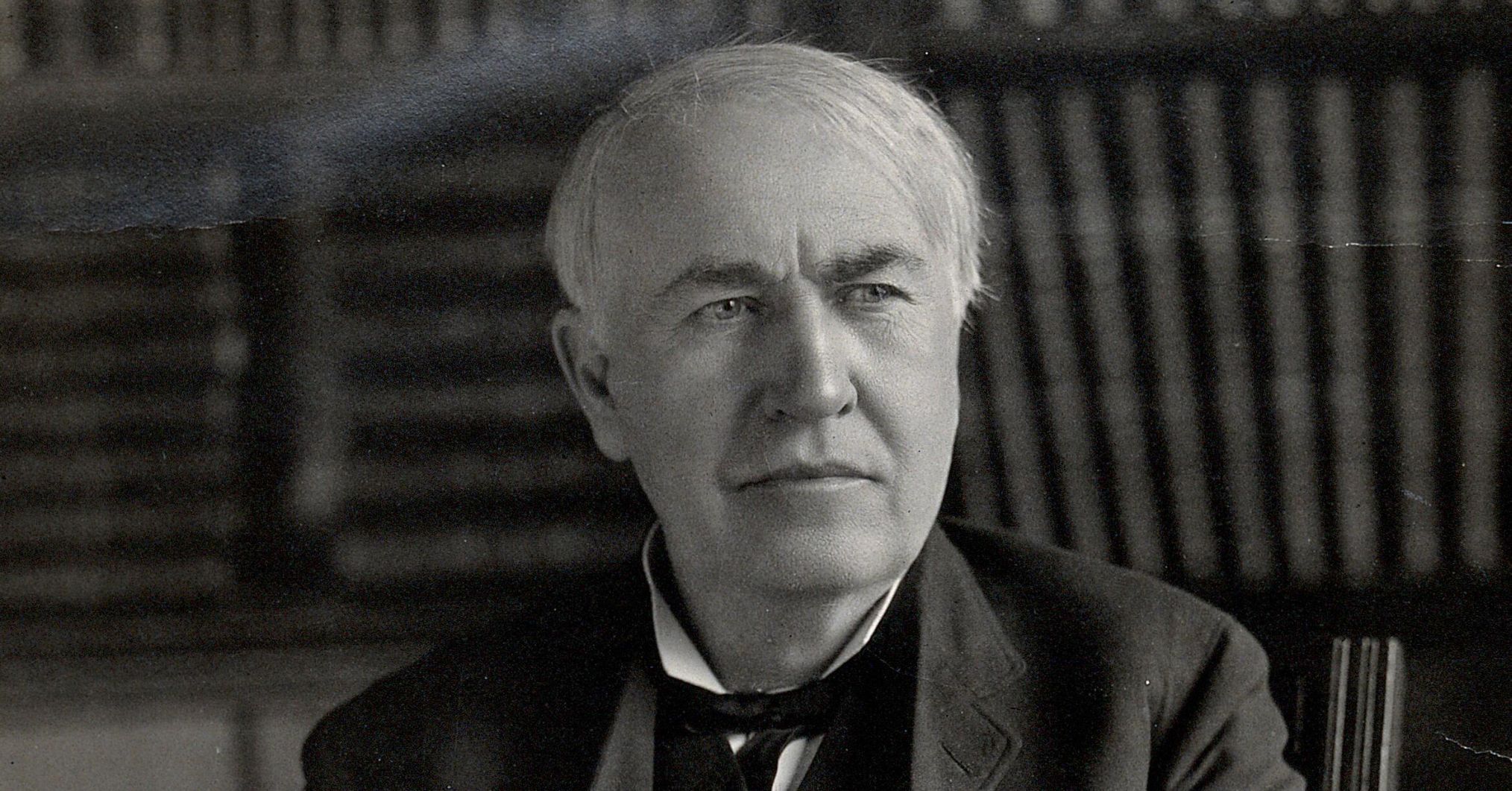World's First Power Plant
Thomas Alva Edison stood in the Wall Street offices of financial mogul J.P. Morgan and switched on his Edison incandescent light bulb – a bulb powered by a generator at his new Pearl Street Station power plant several city blocks away.

Instantly, the room was filled with a soft, continuous light produced without gas or flame. At the nearby offices of the New York Times, 52 light bulbs installed by Edison glowed, prompting the paper to describe the new electric light as “soft, mellow and graceful to the eye…without a particle of flicker to make the head ache.”
Key to his centralized electrical lighting system was a network of underground wires and tubes that branched from the station and transmitted power to users. That elaborate, interconnected grid of transmission lines, in the heart of Manhattan’s business district, marked the beginning of New York’s bulk electricity grid.
Today, New York’s bulk electricity grid spans 10,775 miles, transporting power to more than 7 million electricity ratepayers and 19 million residents statewide. Operated by the New York Independent System Operator, the grid is one of the most sophisticated power delivery systems in the world, providing reliable, safe energy to Empire State residents every day.“In 1882, Thomas Edison’s Pearl Street Station was a marvel, a complete electric lighting, generation and distribution system that for the first time offered the safe, reliable delivery of electricity at competitive prices,” said Mark S. Lynch, the NYISO’s President and CEO. In 2007, New York’s bulk electricity grid is no less a marvel, reliably distributing power available for use day or night at the lowest possible cost.”
He added: “Our open, competitive markets foster innovations such as our Demand Response Programs, increased transmission capacity, the addition of new generation and renewable power resources. Our robust planning processes combine to make New York’s bulk electricity grid one of the world’s premiere power systems.”
Like New York’s bulk electricity grid, Edison’s power system quickly proved to be a reliable and economical way to transport electricity, its success trumpeted by newspapers of the day such as the New York Herald, which described the debut of Pearl Street Station in its Sept. 5, 1882 editions: “In a twinkling, the area bounded by Spruce, Wall, Nassau, and Pearl Streets was in a glow.”
Creating, distributing power
Creating that glow wasn’t an easy task by any means. Edison developed a huge 27-ton dynamo – which is what generators were called in the 19th century – dubbed “Jumbo” that converted mechanical energy into low-voltage direct current electricity to power his plant. By 1884, Pearl Street Station – which only operated at night – was serving 508 customers with more than 10,000 lamps. Six Jumbo dynamos, each producing about 1,100 kilowatts, were needed to light up the plant’s one-square mile service area.
Despite its limitations, Pearl Street Station’s interconnected grid became a model for power generation and distribution systems nationwide. But for Edison, the question of how to distribute the power was perhaps more challenging than producing the electricity to light the bulbs.
For safety reasons, Edison insisted on installing his power lines underground – a costly endeavor that required Edison to convince the mayor of New York City to allow him to dig up the streets to install 100,000 feet of wiring to connect customers to the power plant. Installing the wiring was one of the project’s most expensive undertakings.
To go with his power system, Edison developed other necessary items, including a meter to track a customer’s electricity usage, and better generators. A savvy entrepreneur, Edison built manufacturing plants for light bulbs, generators and other power system components, consolidating his operations in Schenectady, New York.
Grid importance
Even Edison couldn’t have foreseen the impact of his power station and electric grid system.
Pearl Street Station’s centralized lighting system quickly pointed out the need for larger power generation systems, power generated in voltages other than lighting (110 volts) and a far-reaching grid system to deliver electricity over greater distances.
Still, Pearl Street Station faithfully produced power until an 1890 fire destroyed all but one of the system’s generators. The station, which had been dwarfed by larger power plants distributing power to larger service areas, was rebuilt and operated until 1895, when it was deemed obsolete and dismantled. A commemorative plaque marking the Pearl Street Station’s site was placed there in 1917 by the New York Edison Company.

Thomas Edison First Patent

World's First Power Plant

Incandescent Electric Lamp
Let's start
to work

Contact Us
415 E. Airport Fwy 4th Floor,
Irving TX 75062
-
Telephone+1 (214) 679-8600
- Copyright 2008 - 2023 ©Global Edison. All Rights Reserved.
- Privacy Policy
- Terms of Use
-
This email address is being protected from spambots. You need JavaScript enabled to view it.